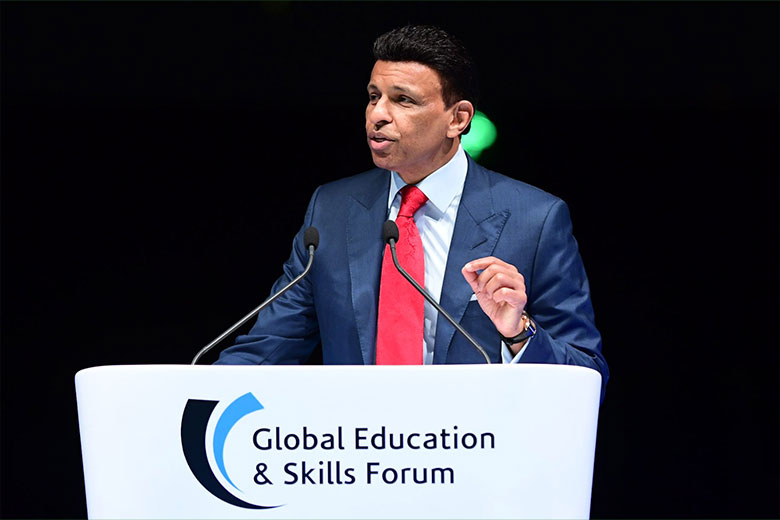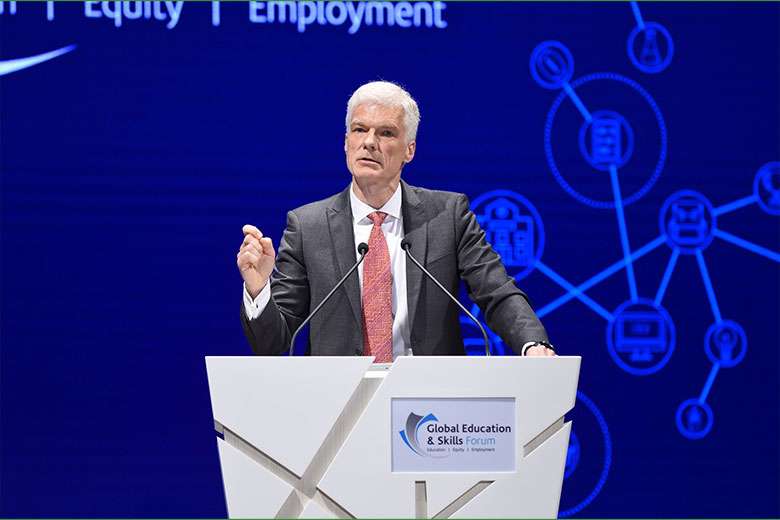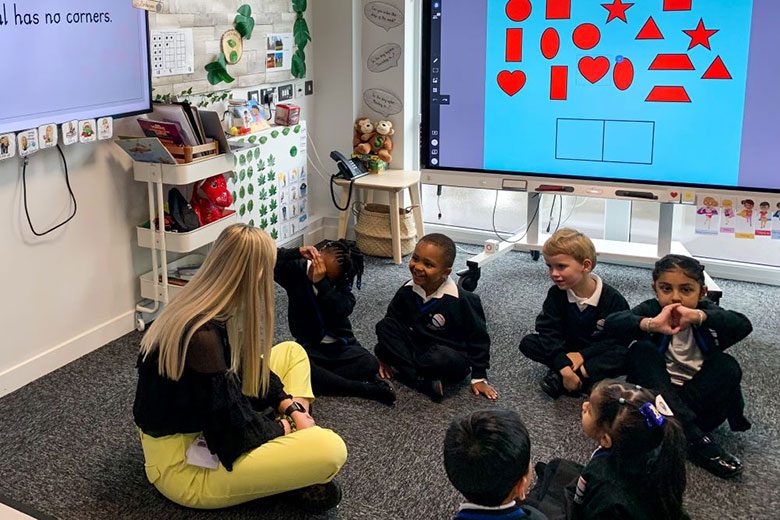Schools across the Middle East are world beaters in delivering higher outcomes than their peers worldwide, particularly in technology use, according to a research-based whitepaper released today.
The whitepaper – What’s Working in EdTech Today: Middle East Insights for Success – was released by Canadian Edtech innovator SMART Technologies to coincide with its participation in GESS, the Middle East’s leading education conference and exhibition.
The white paper research was based on a survey of more than 3,500 teachers, IT administrators, and leaders in technology and educational policy development and implementation across the globe, including professionals from the UAE Saudi Arabia, Palestine, Oman, Lebanon, and Israel.
The survey findings put the Middle East in pole position when it comes to the use of technology in education (Edtech), according to the whitepaper authors.
“The research data reveals that schools in the Middle East are preforming better than their global counterparts, showing higher outcomes especially when it comes to the effectiveness of teaching and learning with technology,” explained Nadia Baraghithi, SMART’s Middle East Education Consultant.
In the region, the efficiency of technology-based education for teachers reaches an impressive 66%, compared to 45% in the international markets, including North America and the UK.

Education entrepreneur and philanthropist, who launched the Global Teacher Prize urges greater knowledge sharing between the independent sector and governments to help improve education across the world
“We also see that schools reporting the highest outcomes in the region are using technology that provides interactive, collaborative learning experiences such as game-based and assessment software. Schools that are using non-interactive technology – like static projection systems, are reporting lower outcomes.
In terms of students, education efficiency currently stands at 69% in the Middle East, compared to 44% globally, yet students in the region that receive digital-centric education are 58% likely to meet academic performance standards, compared to 38% for students in other areas of the world.
“Along with reporting better outcomes than respondents in the rest of the world, Middle East respondents report slightly higher levels of development in 96%, meeting performing metrics, many capabilities, with some exceptions.”
While overall the survey findings make for good reading for Middle East educators, it also identifies some gaps. “Though overall, Middle East respondents reported more technology use than respondents elsewhere, it did pinpoint a 5% lower regional use of interactive displays compared with the rest of the world,” said Aaron Fright, SMART’s Regional Sales Director.

Students globally are eight months behind where they would have been due to the pandemic
The whitepaper goes on to highlight areas where the Middle East could further its Edtech use ranking including enabling student participation in tech planning and implementation, assessment and measurement of students’ engagement and progress; the valuation and focus of professional development activities; provision of collaborative professional development opportunities for educators; precision focused technology investment.
“The research data highlights how technology that helps to move classrooms from passive knowledge-gathering spaces to interactive, stimulates environments, keeping students engaged and connected with their learning. The whitepaper data, coupled with the science of learning tells, us that when students can connect and interact in various ways, and are active participants in their own learning, they are more engaged. This leads to better retention and comprehension,” added Fright.
“The formula for success with educational technology is to start with pedagogy, then select software that supports existing teaching practice, and lastly, choose hardware that best supports the use of that software.”






